Stewart Island, located south of the South Island of New Zealand, is a haven for bird watchers and nature enthusiasts alike. Often referred to as the “bird capital” of New Zealand, Stewart Island boasts a plethora of native bird species, including some that are endangered and can only be found on the island.
The unique ecosystem of the region, characterized by a rugged coastline, primeval rainforests, and alpine ridges, has provided a perfect habitat for the evolution of the unique bird species.
The diverse and abundant birdlife of Stewart Island has captured the attention of researchers, ornithologists, and bird lovers from around the world, making it a popular destination for birdwatching tours and wildlife photography expeditions.
In this article, we will explore the amazing bird life of Stewart Island, highlighting some of the rare and exotic birds that call this beautiful island home.
1. Kākā
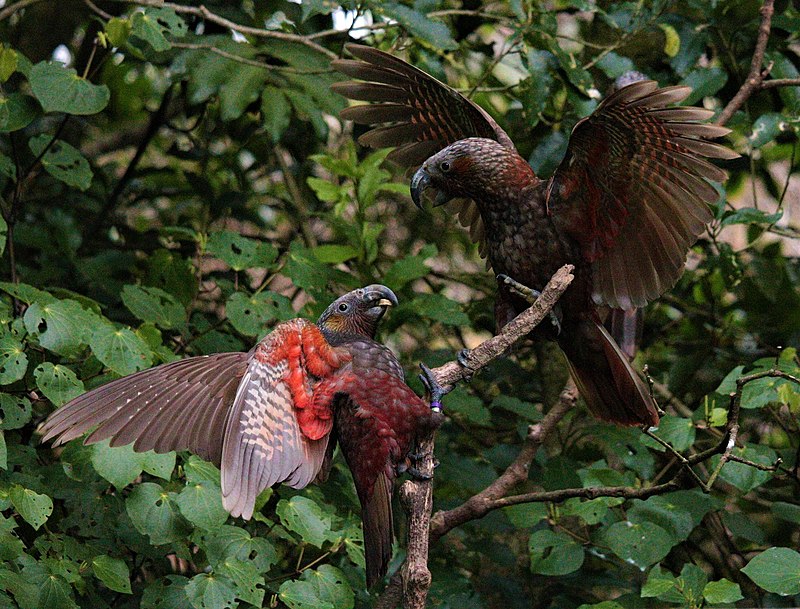
Kākā is a large parrot belonging to the Nestoridae family, and found only in New Zealand’s native forests.
It has two subspecies and is endangered due to its disappearing range; most of its former habitats have been lost.
The conservation efforts are underway with re-introduction attempts taking place on offshore islands.
Kākās live in tree cavities where they feed mostly on fruits, seeds, flowers, leaves as well as insects and larvae.
They form flocks during breeding season which often consist of adult birds alongwith fledglings from previous years that help raise new chicks – the social nature of this species makes it very endearing.Scientific classification:
| Kingdom | Animalia |
| Phylum | Chordata |
| Class | Aves |
| Order | Psittaciformes |
| Family | Strigopidae |
| Genus | Nestor |
| Species | N. meridionalis |
Also Featured In: New Zealand Birds,
2. New Zealand Fantail
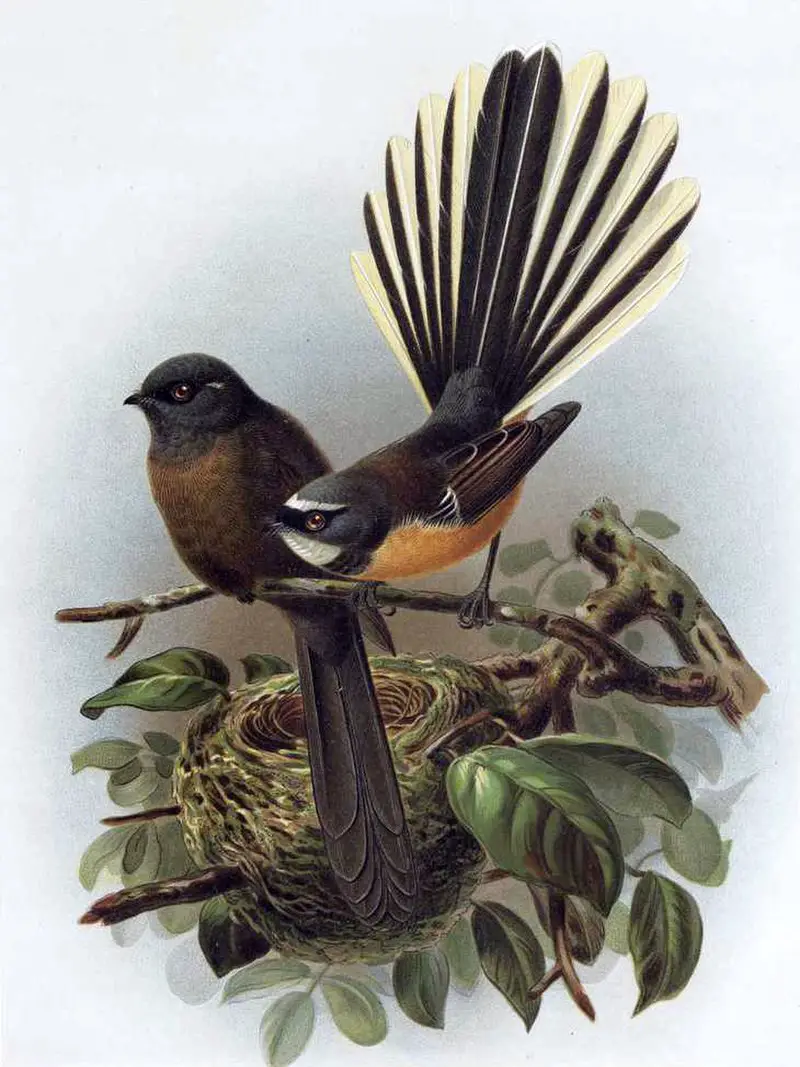
The New Zealand fantail, or Rhipidura fuliginosa, is a small insectivorous bird found only in New Zealand. It has four subspecies which can be identified by their distinctive coloring and range: the South Island’s R.
f. fuliginosa; North Island’s R. f. placabilis; Chatham Islands’ R.f penita; and Lord Howe Islands extincted species of R.. f cervina.
These birds are affectionately known to Maoris as piwakawaka, tiwakawaka or piwaiwaka due to their beautiful flycatcher-like behavior.
With black upperparts and white underbelly feathers they have long tail feathers that sweep from side to side while searching for food – making them an iconic part of New Zealands native wildlife sceneScientific classification:
| Kingdom | Animalia |
| Phylum | Chordata |
| Class | Aves |
| Order | Passeriformes |
| Family | Rhipiduridae |
| Genus | Rhipidura |
| Species | R. fuliginosa |
3. South Island Robin
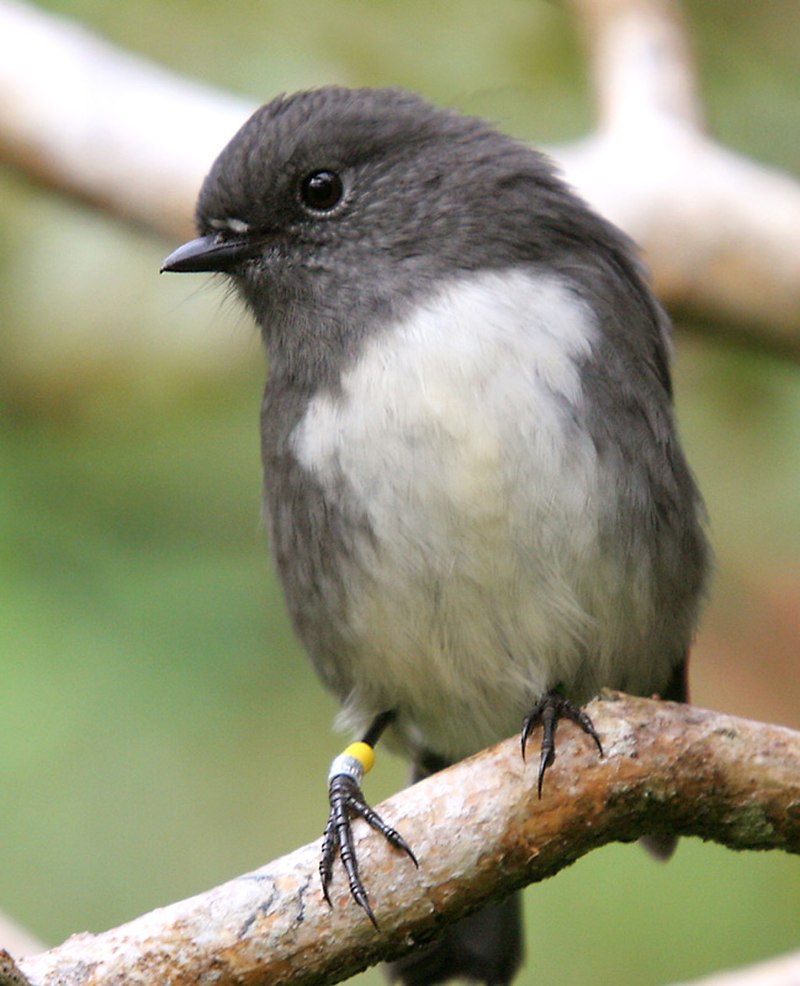
The South Island robin is a sparrow-sized bird native to New Zealand, and it has the status of an officially protected species. This species is sparsely distributed across the South Island and Stewart Island/Rakiura.
It belongs to two subspecies: The nominate (Petroica australis) and P. australis rakiura from Stewart Island respectively.
Both types have reddish brown plumage with a white lower belly, dark grey cheeks, black wings with white tips as well as yellow eyes and legs.
They are omnivores that feed on insects such as moths or caterpillars in addition to fruits like berries or seeds when available.
Breeding season takes place mainly during summer months – around October through April – where they can produce up to three broods per year.
These birds make their nests in tree cavities which helps them keep safe from potential predators while also providing shelter for both eggs & chicks until fledging occurs after roughly 16 days post hatching.Scientific classification:
| Kingdom | Animalia |
| Phylum | Chordata |
| Class | Aves |
| Order | Passeriformes |
| Family | Petroicidae |
| Genus | Petroica |
| Species | P. australis |
4. Yellow-Eyed Penguin
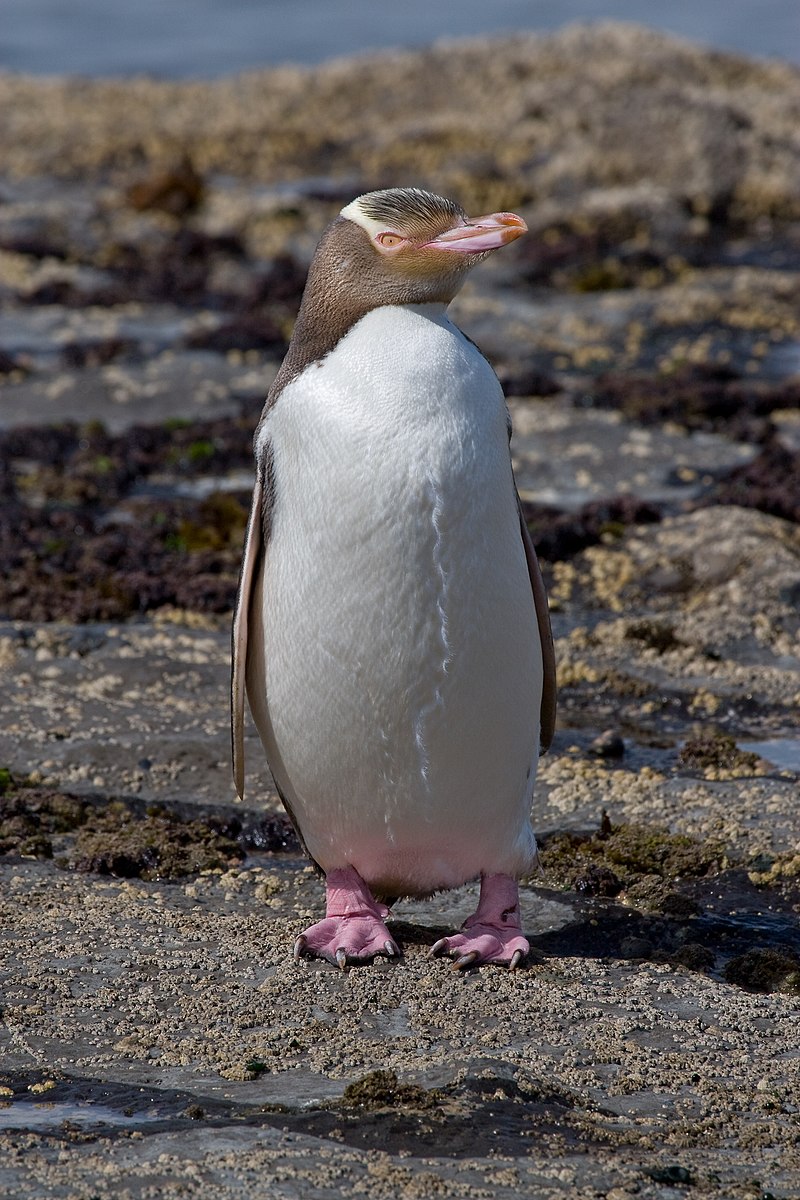
The Yellow-eyed Penguin, also known as hoiho or tarakaka, is a species of penguin endemic to New Zealand.
It can be distinguished from other penguins by its yellow eyes and distinctive yellow band across the top of its head.
Molecular research has revealed that it is closely related to Eudyptes Penguins rather than the Little Penguin.
As with most penguins, the Yellow-eyed Penguin’s diet consists mainly of fish which it catches in shallow waters near shorelines.
During breeding season they form colonies on rocky coasts around New Zealand where they build nests out of pebbles and twigs lined with feathers for their eggs and chicks.
With such an iconic presence in New Zealand’s waters, these charming birds are sure to make any beach trip memorable.Scientific classification:
| Kingdom | Animalia |
| Phylum | Chordata |
| Class | Aves |
| Order | Sphenisciformes |
| Family | Spheniscidae |
| Genus | Megadyptes |
| Species | M. antipodes |
Also Featured In: Tundra Birds,
5. South Island Saddleback
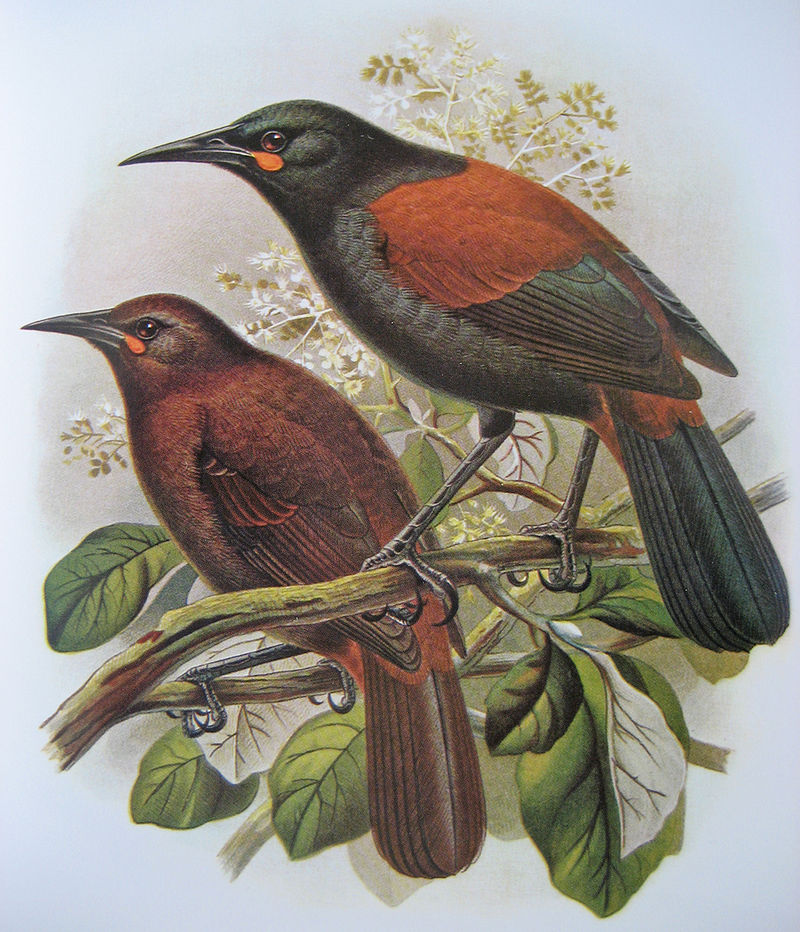
The South Island saddleback, or tīeke, is an endangered bird from New Zealand’s wattlebird family.
It is endemic to the South Island of New Zealand and was once considered part of the same species as its North Island counterpart.
The Department of Conservation currently lists it as At Risk–Declining due to habitat destruction that began in the early 19th century when settlers cleared forests for farming and other uses.
To help protect this rare species, conservation efforts have included captive breeding programs and restoring native bush habitats on predator-free islands.
As a result, populations are slowly increasing but much more needs to be done to ensure their long-term survival in the wild.Scientific classification:
| Kingdom | Animalia |
| Phylum | Chordata |
| Class | Aves |
| Order | Passeriformes |
| Family | Callaeidae |
| Genus | Philesturnus |
| Species | P. carunculatus |
6. Westland Petrel
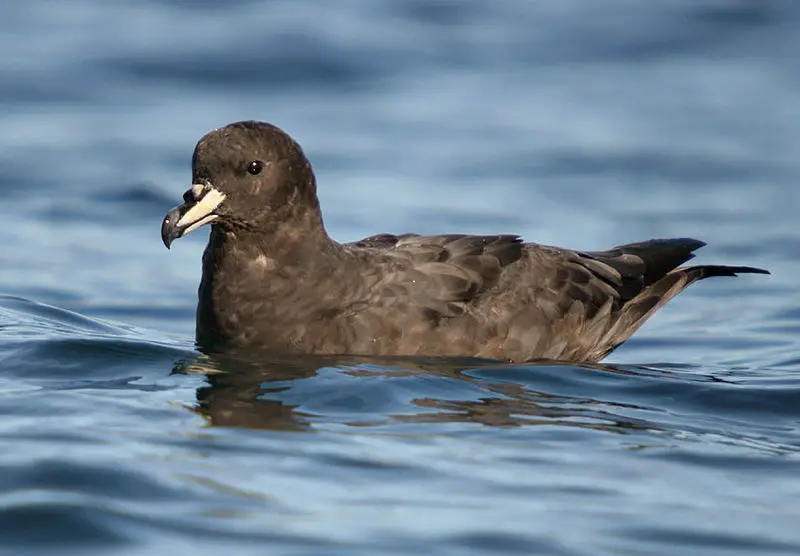
The Westland petrel is an endemic species to New Zealand, belonging to the Procellariidae family of seabirds. It has a stocky build and weighs around 1,100 grams (39 oz), making it one of the largest burrowing petrels.
Its dark blackish-brown feathers are complemented by its distinctively black bill and feet.
It breeds on islands off both coasts of South Island in summertime before migrating northwards for winter feeding grounds further offshore away from land.
The species feeds mainly on squid but also takes small fish such as herring or pilchard when available close enough to shorelines where they breed.
They feed at night using their sense of smell combined with sonar like clicks produced from their bills which helps them locate food beneath surface waters many meters deep underwater during darkness hours only illuminated by moonlight reflections upon waves above .Scientific classification:
| Kingdom | Animalia |
| Phylum | Chordata |
| Class | Aves |
| Order | Procellariiformes |
| Family | Procellariidae |
| Genus | Procellaria |
| Species | P. westlandica |
Also Featured In: Patagonia Birds You Should Know,
7. Paradise Shelduck
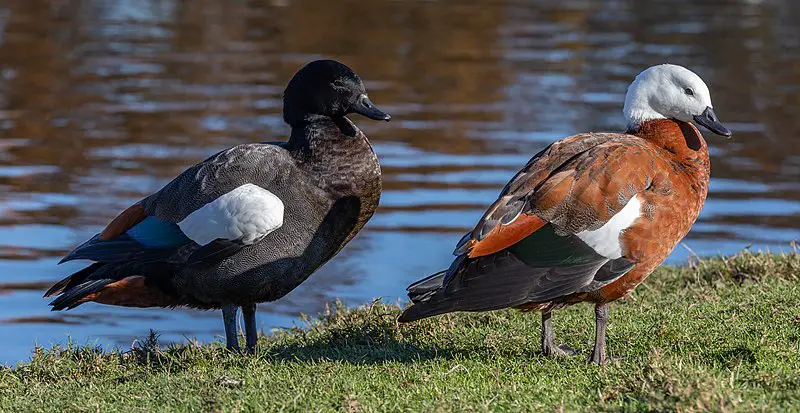
The Paradise Shelduck is an iconic bird native to New Zealand. It has a striking plumage, with the male having a black head and barred body while the female sports a white head with brown stripes on her back and wings.
This species of shelduck can be seen in various habitats such as wetlands, grasslands, coastal areas and even urban parks.
They feed mainly on aquatic plants but also eat molluscs, insects larvae and small fish when available.
Their conservation status is ‘not threatened’ due to their wide range throughout New Zealand which makes them one of our most visible waterfowls.Scientific classification:
| Kingdom | Animalia |
| Phylum | Chordata |
| Class | Aves |
| Order | Anseriformes |
| Family | Anatidae |
| Genus | Tadorna |
| Species | T. variegata |
8. Black-Fronted Tern
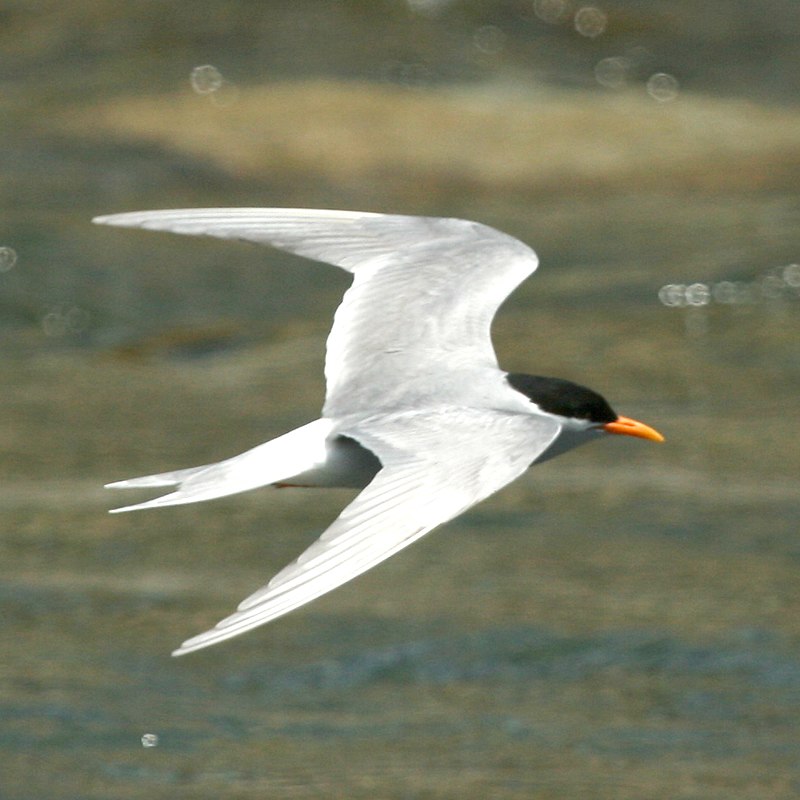
The Black-fronted Tern is a small species of tern found mainly in New Zealand. It has a mostly grey plumage and feeds on freshwater fish, arthropods and worms.
This bird breeds primarily in the eastern regions of the South Island, with its population having declined due to habitat loss over recent years.
The Black-fronted Tern prefers lowland sites near waterbodies such as rivers or lakes for nesting purposes, though it also occurs around coastal areas during migration periods.
Its call is high pitched and distinctive – one that can easily be recognized by experienced birdwatchers. Conservation efforts are underway to protect this unique species from further decline into extinction.Scientific classification:
| Kingdom | Animalia |
| Phylum | Chordata |
| Class | Aves |
| Order | Charadriiformes |
| Family | Laridae |
| Genus | Chlidonias |
| Species | C. albostriatus |
Also Featured In: Black Birds in New Zealand,
9. Cook’s Petrel
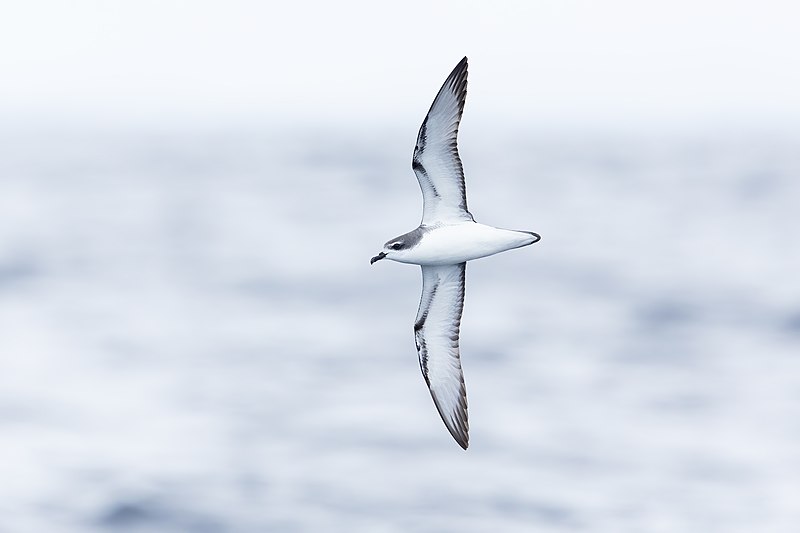
Cook’s petrel is a Procellariform seabird, belonging to the gadfly petrels and part of the Cookilaria subgroup.
It stands out amongst its peers due to its small size; typically 25-30 cm long with a wingspan of 65-66 cm and weighing approximately 200 g.
Its plumage is predominantly dark grey in colour which contrasts sharply against its bright blue feet – earning it another name: ‘blue footed petrel’.
Despite being one of the smallest species within this group, Cook’s Petrel can travel vast distances over open ocean waters using an advanced navigation system that helps them find food sources located thousands of kilometres away from their nesting grounds.Scientific classification:
| Kingdom | Animalia |
| Phylum | Chordata |
| Class | Aves |
| Order | Procellariiformes |
| Family | Procellariidae |
| Genus | Pterodroma |
| Species | P. cookii |
Also Featured In: Birds You’ll Find in the Marshall Islands,
10. White-Faced Storm Petrel
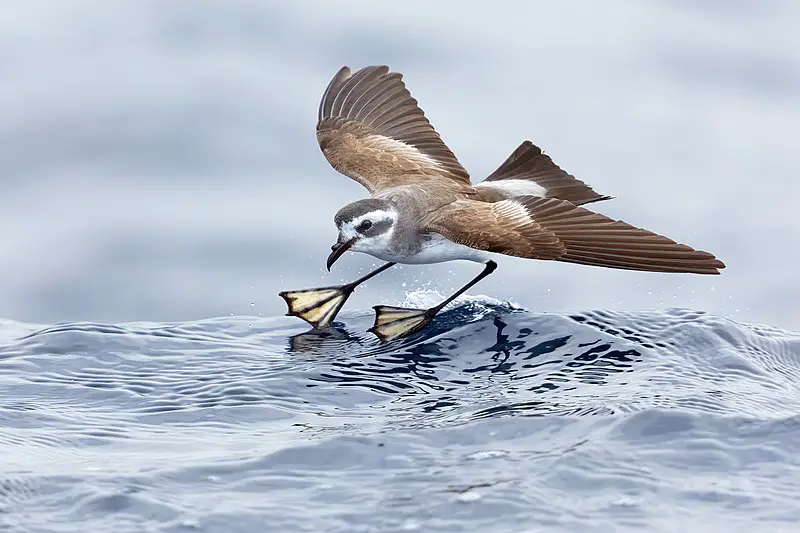
The White-faced Storm Petrel is a remarkable seabird belonging to the austral storm petrel family. It has a length of 19 to 21 centimetres and wingspan that ranges from 41 to 44 cm.
Its body is pale brown or grey, with blackish primaries in its wings and tail feathers.
The most distinctive feature is its white face which gives it an unmistakable appearance among other birds species.
These small, pelagic bird breed mainly on islands off New Zealand and Australia as well as Chile, Argentina, South Georgia and Tristan da Cunha Islands during summer season when they build their nests under rocks or burrows for laying eggs .
They feed by swimming underwater with their feet while searching for food like squid or fish near the surface of water.
In winter these birds migrate southwards where they spend time away from breeding grounds in order to survive cold weather conditions at higher latitudes.Scientific classification:
| Kingdom | Animalia |
| Phylum | Chordata |
| Class | Aves |
| Order | Procellariiformes |
| Family | Oceanitidae |
| Genus | Pelagodroma Reichenbach, 1853[2] |
| Species | P. marina |
Also Featured In: Cabo Verde birds, Birds of Lanzarote
11. Mottled Petrel
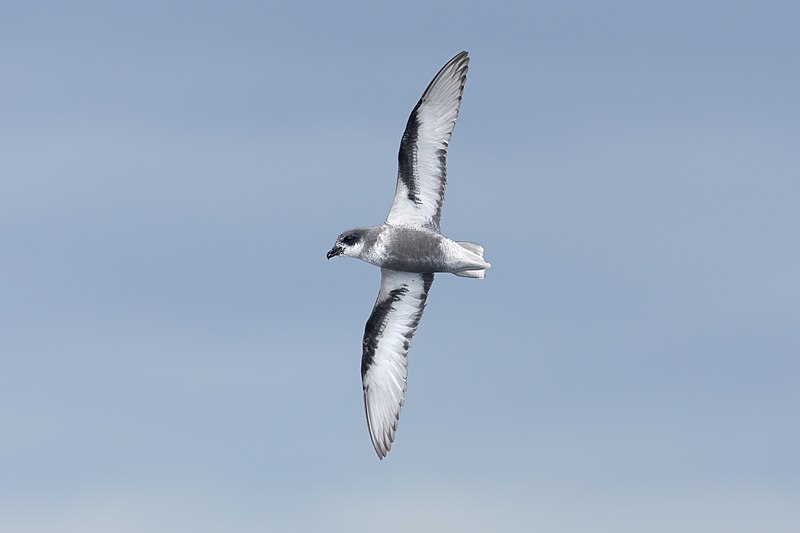
The Mottled Petrel, also known as the Kōrure, is a species of seabird found in oceans around the world. It has a wingspan of 29 to 32 inches and typically measures 13-14 inches long.
This bird prefers spending its time away from land except when it needs to nest or care for young. The diet consists mainly of fish and squid with some crustaceans thrown in occasionally.
As a transquatorial migrant, they spend summer months breeding on islands off New Zealand before migrating eastward across the Pacific Ocean towards North America during winter months.
They’re not particularly shy birds but despite their prevalence little is know about them due to how rarely they come ashore making studying these creatures challenging at best.Scientific classification:
| Kingdom | Animalia |
| Phylum | Chordata |
| Class | Aves |
| Order | Procellariiformes |
| Family | Procellariidae |
| Genus | Pterodroma |
| Species | P. inexpectata |
Also Featured In: Kiribati Birds, Most Common Birds of Midway Atoll
12. Southern Fulmar
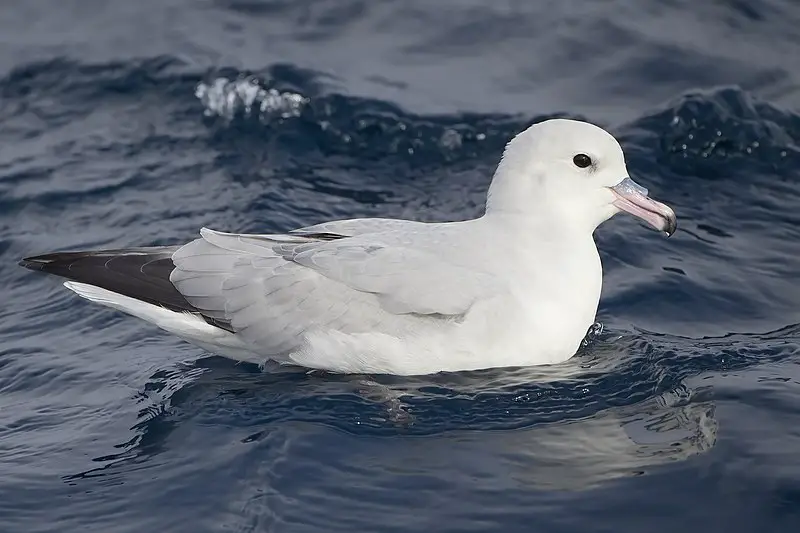
The Southern fulmar is a species of seabird found in the southern hemisphere. It has an overall pale grey body and white underparts, with a unique white patch on the wings.
Its breeding season takes place mainly along coastlines, where it builds its nest to lay eggs.
These birds are often seen soaring through the skies or bobbing atop waves near coasts during their migration periods as they search for food which includes fish, squid, crustaceans and other marine creatures.
Their diet also consists of carrion such as dead seals or whales floating at sea that are scavenged upon by these opportunistic omnivores.
With increasing concern over environmental protection and conservation efforts for oceanic wildlife habitats worldwide, this remarkable species will no doubt continue to play an important role in maintaining balance within our fragile ecosystems across the globe.Scientific classification:
| Kingdom | Animalia |
| Phylum | Chordata |
| Class | Aves |
| Order | Procellariiformes |
| Family | Procellariidae |
| Genus | Fulmarus |
| Species | F. glacialoides |
Also Featured In: Antarctica Birds, Common Birds that Live around Ushuaia
13. Brown Skua
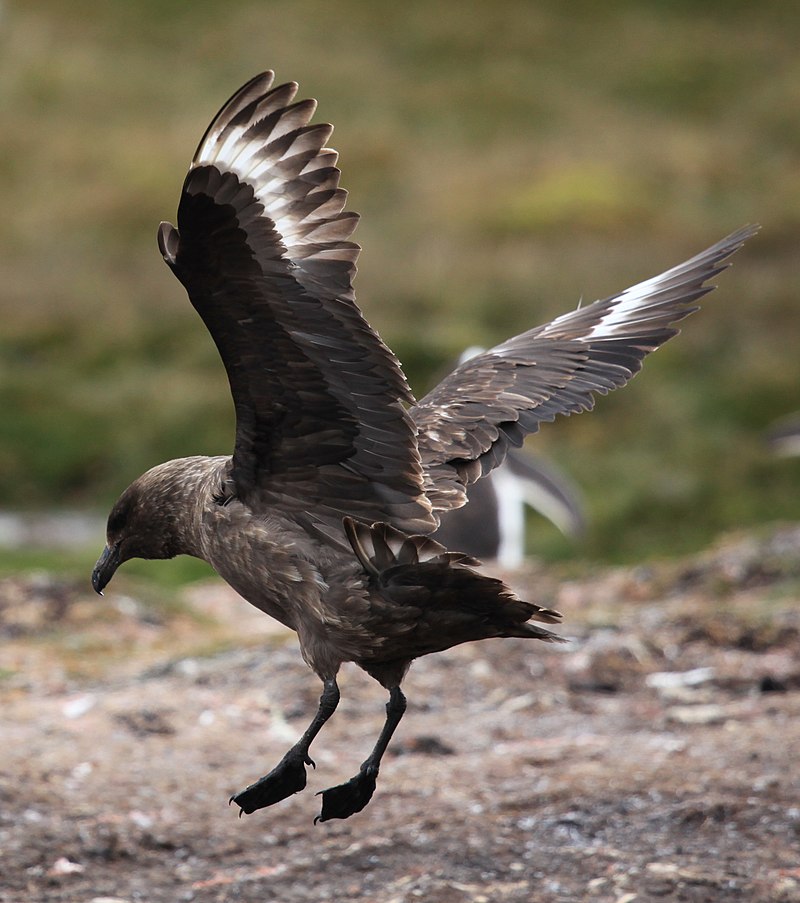
The brown skua is a large seabird found in subantarctic and Antarctic regions, often moving further north to find food when not breeding.
It goes by many names including the Antarctic Skua, Southern Great Skua or Hākoakoa (Māori).
Its taxonomy has been disputed with some believing it should be split into two or three species like Falkland Skuas.
The Brown Skuas are mostly dark grey-brown on top with white bellies and have long wings that enable them to fly great distances over vast oceans searching for food.
They feed mainly on fish but also scavenge from other animals’ kills such as penguins and petrels.
In their natural environment they form strong social bonds which help protect their young ones against predators while nesting near colonies of birds in the grasslands surrounding Antarctica’s coasts.Scientific classification:
| Kingdom | Animalia |
| Phylum | Chordata |
| Class | Aves |
| Order | Charadriiformes |
| Family | Stercorariidae |
| Genus | Stercorarius |
| Species | S. antarcticus |
Also Featured In: Falkland Islands Birds You Need To Know, Common Birds Found near Saint Helena
14. White-Chinned Petrel
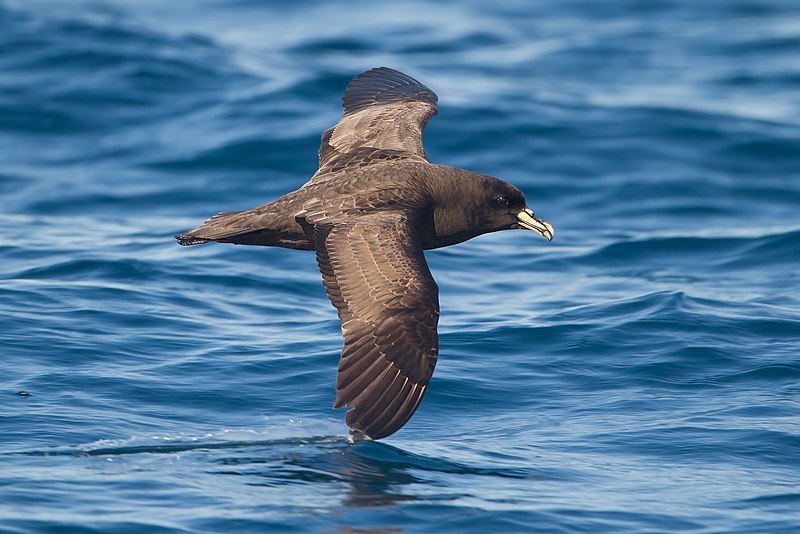
The White-chinned Petrel is a large seabird belonging to the Procellariidae family. It can be found in oceans around the Southern Hemisphere, ranging from Australia to Peru and Namibia.
These birds breed colonially on scattered islands and are sometimes known as Cape hens or Shoemakers.
They have unique white chins that distinguish them from other petrels, such as their former conspecies Spectacled Petrel.
Their wingspan averages about 115 cm across and they travel up to 4400 km during migration season.
The White-chinned Petrel feeds mainly on small fish, squid and zooplankton; it dives into the ocean for its prey using its strong webbed feet.
This species has an impressive lifespan of more than 35 years – making these majestic creatures some of our oldest avian companions.Scientific classification:
| Kingdom | Animalia |
| Phylum | Chordata |
| Class | Aves |
| Order | Procellariiformes |
| Family | Procellariidae |
| Genus | Procellaria |
| Species | P. aequinoctialis |
Also Featured In: Welcome Islands Birds You Need To Know, Beautiful Birds Found in Central Islands
15. Fairy Prion
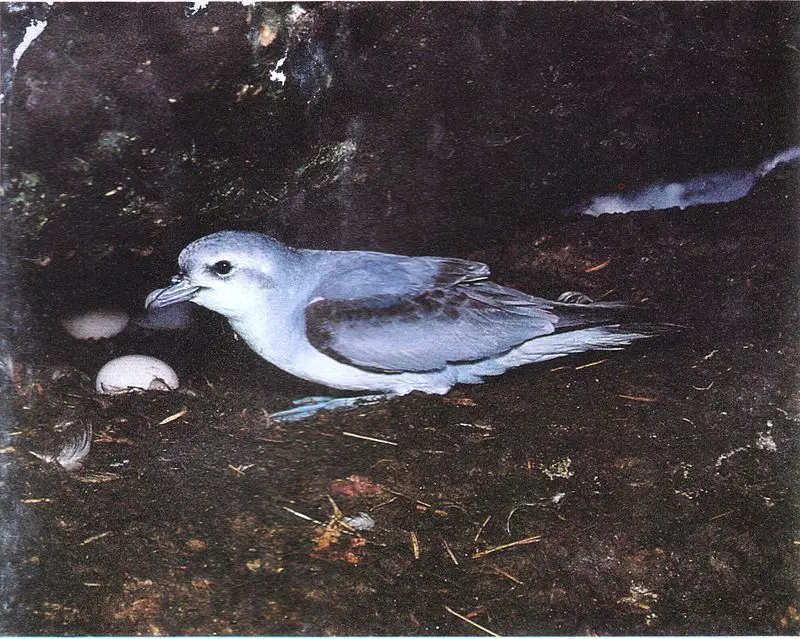
The Fairy Prion is a small seabird found in the low subantarctic and subtropic seas. It has blue-grey upperparts, with a prominent dark “M” marking, as well as white underside feathers.
The male and female of this species look identical. This bird was first formally described by German naturalist Heinrich Kuhl in 1820 under the binomial name Procellaria turtur.
They are an important part of their local ecosystems and have been studied for many years to understand more about them and how they interact with other organisms.Scientific classification:
| Kingdom | Animalia |
| Phylum | Chordata |
| Class | Aves |
| Order | Procellariiformes |
| Family | Procellariidae |
| Genus | Pachyptila |
| Species | P. turtur |
16. Northern Giant Petrel
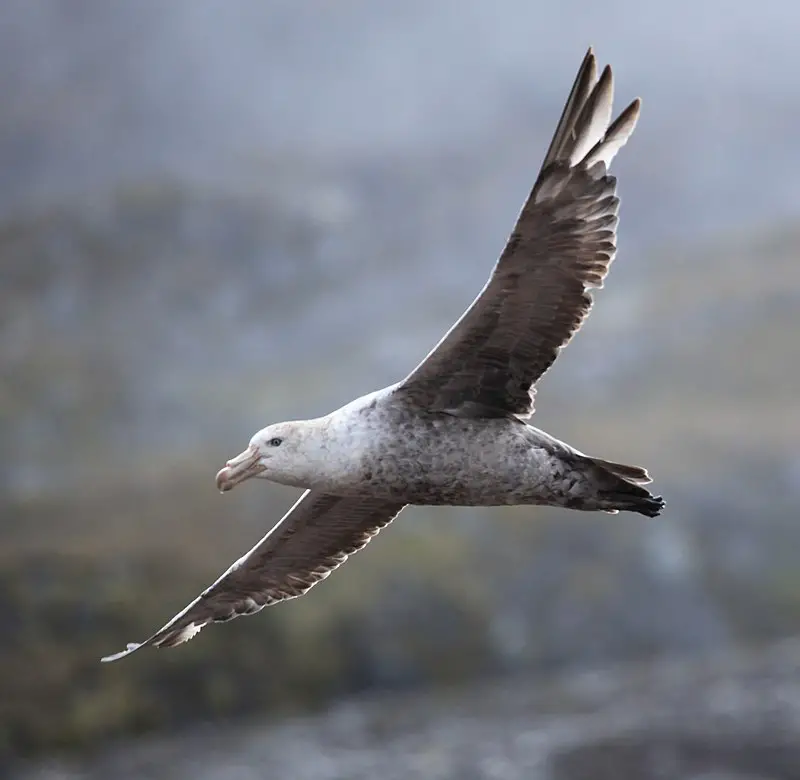
The Northern Giant Petrel is a large seabird of the southern oceans and belongs to the Macronectes family. It has broad distribution, overlapping with that of its cousin -the Southern Giant Petrel- but slightly northward.
First described in 1912 by Australian ornithologist Gregory Mathews as a subspecies of the Southern Giant Petrel, it reaches up to 75 cm long and weighs 3 kg on average.
Its plumage is dark grey above while white below, having black bill tipped with yellow or pink color along an orange line running from base to tip; its feet are also bright yellowish-orange in hue.
This species feeds mainly on fish and squid near coastal waters or scavenges carcasses farther away out at sea during winter months when food sources become scarce closer inland.Scientific classification:
| Kingdom | Animalia |
| Phylum | Chordata |
| Class | Aves |
| Order | Procellariiformes |
| Family | Procellariidae |
| Genus | Macronectes |
| Species | M. halli |
Also Featured In: Birds that Live in Gold Coasts, South Shetland Islands Birds You Need To Know
17. Broad-Billed Prion
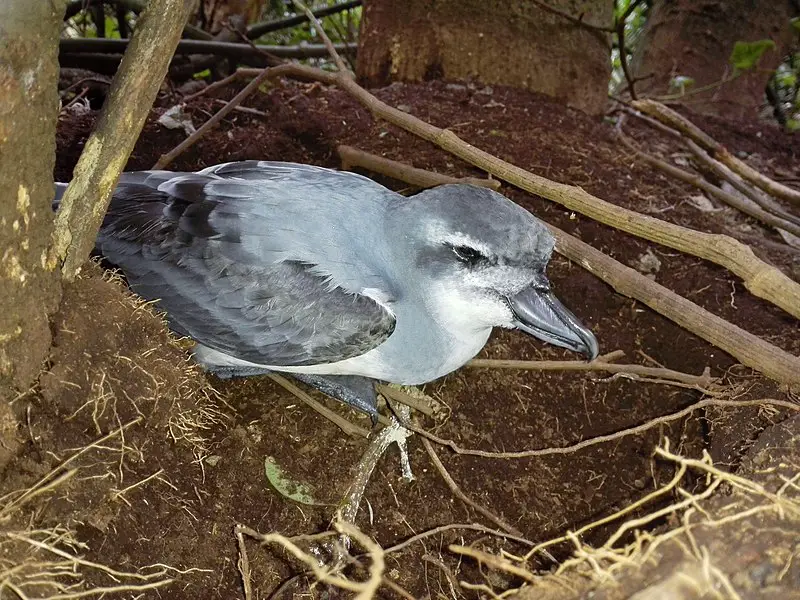
The Broad-billed Prion is an impressive seabird with a wingspan of up to 28 inches. Its grey upperparts are contrasted by white underparts and both sexes look alike.
It inhabits the southeast Atlantic Ocean, near the Antarctic Convergence all the way to New Zealand.
They breed mainly on Tristan da Cunha and Gough Islands in South Atlantic; as well as South Pacific areas such as Macquarie Island, Chatham Islands, Auckland Islands etc.
During breeding season they build their nests out of vegetation or mud burrows dug into cliffsides or slopes.
These birds eat crustaceans and small fish which they catch while flying low over surface water at night time along coastlines.
Their population numbers have been decreasing due to marine pollution caused by human activities like fishing trawlers that often discard plastic materials which can cause entanglement for these birds leading them towards death unless rescued quickly enough.Scientific classification:
| Kingdom | Animalia |
| Phylum | Chordata |
| Class | Aves |
| Order | Procellariiformes |
| Family | Procellariidae |
| Genus | Pachyptila |
| Species | P. vittata |
Also Featured In: Gough Island Birds You Should Know,
18. White-Headed Petrel
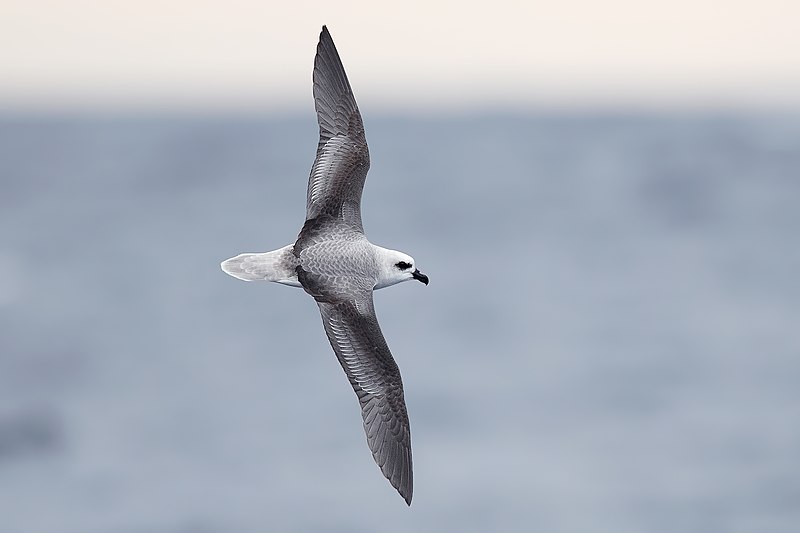
The White-headed Petrel is an adorable seabird belonging to the petrel family, Procellariidae. It has a length of about 400 mm (16 in) and can be found on subantarctic islands where it breeds either alone or colonially in burrows dug among tussocks and herbfields.
The diet mainly comprises cephalopods and crustaceans which they feed upon pelagically.
These birds have white heads with dark eyes surrounded by a circular black patch near their bill; the rest of its body is greyish blue except for its wings which are black-edged with silver-grey tips.
They tend to use dynamic soaring during migration when flying long distances over water as well as land while searching for food sources along their route.
In addition, they also rely heavily on winds blowing from east to west across oceans due to them being able to fly further faster while conserving energy at the same time.Scientific classification:
| Kingdom | Animalia |
| Phylum | Chordata |
| Class | Aves |
| Order | Procellariiformes |
| Family | Procellariidae |
| Genus | Pterodroma |
| Species | P. lessonii |
19. Buller’s Shearwater
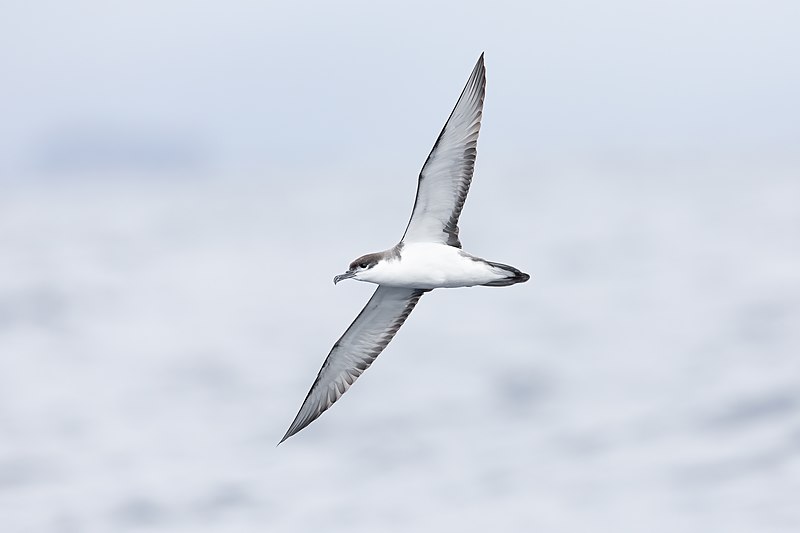
Buller’s shearwater is a species of seabird found in the Pacific Ocean. It belongs to the Procellariidae family, and is also known as grey-backed or New Zealand shearwater.
This bird has an impressive size – adults reach up to 46–47 cm (18–19 inches). Buller’s Shearwaters are members of the Thyellodroma group which includes large-sized birds from Ardenna genus.
In fact, they form a superspecies with wedge-tailed shearwater (A pacificus).
They can be seen near coasts during breeding season when they come ashore for nesting purposes; but otherwise spend most time at sea searching for prey such as fish, squid and crustaceans.Scientific classification:
| Kingdom | Animalia |
| Phylum | Chordata |
| Class | Aves |
| Order | Procellariiformes |
| Family | Procellariidae |
| Genus | Ardenna |
| Species | A. bulleri |
Also Featured In: Cook Islands birds, Birds that Live in the Ocean
20. Silver Gull
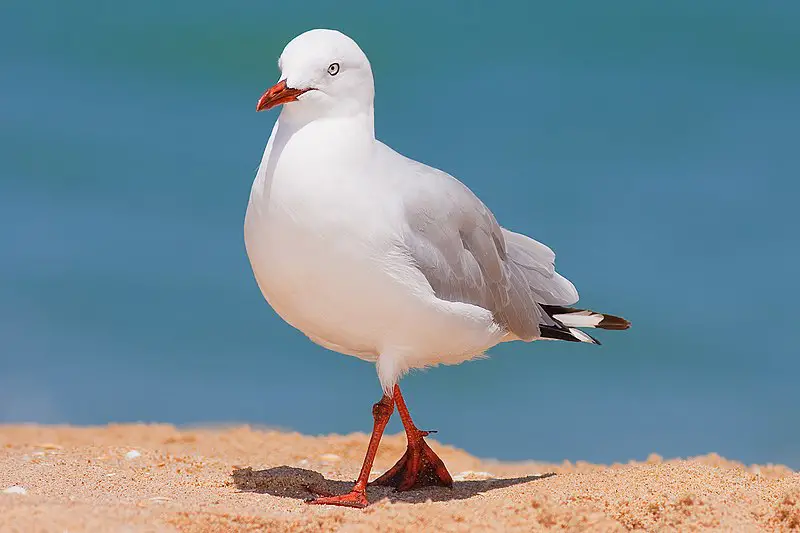
The Silver Gull is a common sight in Australia, especially along the coastlines. It’s smaller than the Pacific Gull and has silver-grey wings with white head and underparts.
Its scientific name is Chroicocephalus novaehollandiae, but it shouldn’t be confused with the Herring Gull which is also called “Silver Gull” in many other languages (Larus argentatus).
During summer months these birds can often be seen around fishing boats scavenging for discarded food or flying low over city parks looking for handouts from humans.
They are highly adaptable to their environment making them quite successful at coexisting near human populations.
These Australian seabirds have been known to live up to 25 years old.Scientific classification:
| Kingdom | Animalia |
| Phylum | Chordata |
| Class | Aves |
| Order | Charadriiformes |
| Family | Laridae |
| Genus | Chroicocephalus |
| Species | C. novaehollandiae |
Also Featured In: Gulls Species, Birds that Live around Brisbane
21. Fiordland Penguin
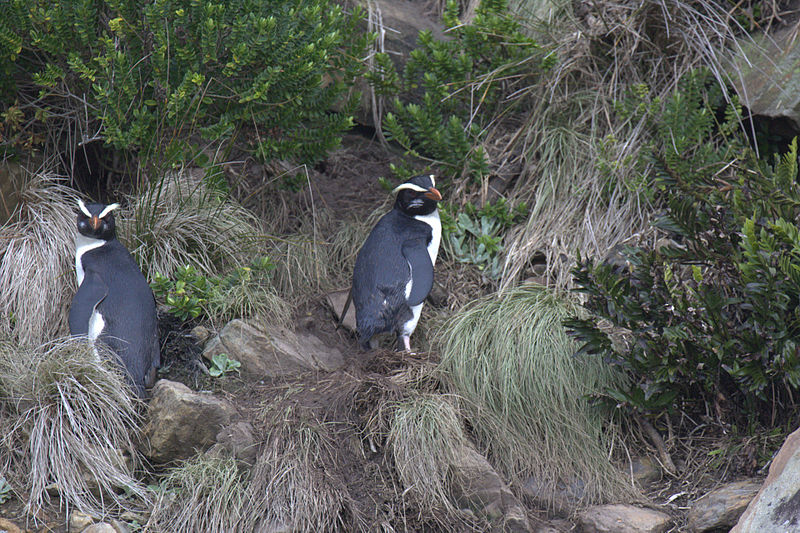
The Fiordland penguin, also known as the tawaki or pokotiwha in Māori, is a crested species of penguin endemic to New Zealand.
It breeds along the south-western coasts of South Island and on Stewart Island/Rakiura with outlying islands.
This bird has adapted to its surroundings by having a thick waterproof feather coat that allows it to survive swimming long distances at sea for food.
Its diet consists mainly of small squid and fish which they hunt during their dives in search for prey.
They use their short beaks when chasing after krill and other crustaceans underwater making them powerful swimmers reaching depths up to 100 meters beneath the surface.
The Fiordland Penguin can live up 25 years if it’s lucky enough not too become an easy meal for predators such as seals, sharks or even large birds like albatrosses.Scientific classification:
| Kingdom | Animalia |
| Phylum | Chordata |
| Class | Aves |
| Order | Sphenisciformes |
| Family | Spheniscidae |
| Genus | Eudyptes |
| Species | E. pachyrhynchus |
Also Featured In: Penguins Species, Endangered Birds of New Zealand
22. Buller’s Albatross
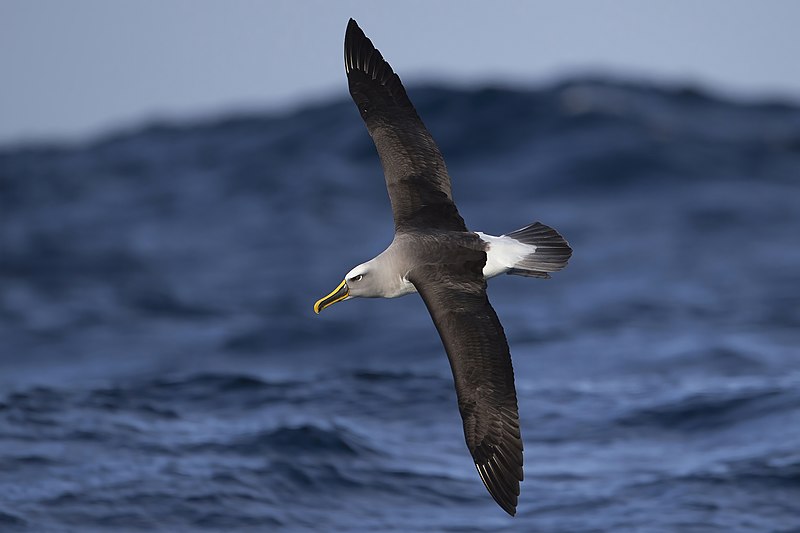
Buller’s Albatross is a small species of mollymawk from the albatross family. It breeds on islands around New Zealand and feeds in the seas off Australia and South Pacific Ocean.
It belongs to Diomedeidae family, together with shearwaters, fulmars, storm petrels and diving petrels which all belong to Procellariiformes order.
This seabird has black upperparts with white head cap extending down its neck while it also shows white rump patch on its mainly grey underparts.
Buller’s Albatross can be seen flying gracefully over warm ocean waters near their breeding grounds or when they come close inshore for food during non-breeding season.
They have an average wingspan of 2 metres making them one of the most graceful birds in flight.Scientific classification:
| Kingdom | Animalia |
| Phylum | Chordata |
| Class | Aves |
| Order | Procellariiformes |
| Family | Diomedeidae |
| Genus | Thalassarche |
| Species | T. bulleri |
Also Featured In: Albatross Species,
23. Australasian Gannet
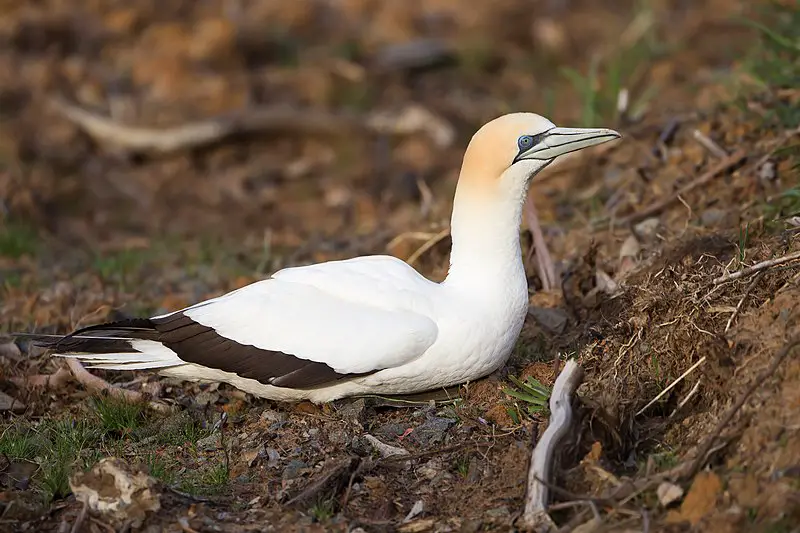
The Australasian gannet is a beautiful seabird with white feathers and black flight feathers that line its wings. Its head has a buff-yellow hue, with blue-grey bill edged in black and bright blue eyes.
It belongs to the booby and gannet family of Sulidae birds. This bird can be found off the coasts of Australia and New Zealand as well as other nearby islands including Lord Howe Island, Norfolk Island, Kangaroo Island, Tasmania South Australia’s Fleurieu Peninsula etc.
As they are excellent swimmers they feed on fish at sea by plunging into water from great heights or near surface swimming along shoals of small fishes in shallow waters.
The name “gannet” comes from an old English word for “gans” meaning goose-like bird because it looks like one when flying high above the ocean but dives down gracefully while hunting fish underwater.Scientific classification:
| Kingdom | Animalia |
| Phylum | Chordata |
| Class | Aves |
| Order | Suliformes |
| Family | Sulidae |
| Genus | Morus |
| Species | M. serrator |
Also Featured In: Booby Species, Birds that You’ll find in Perth
24. Spotted Shag
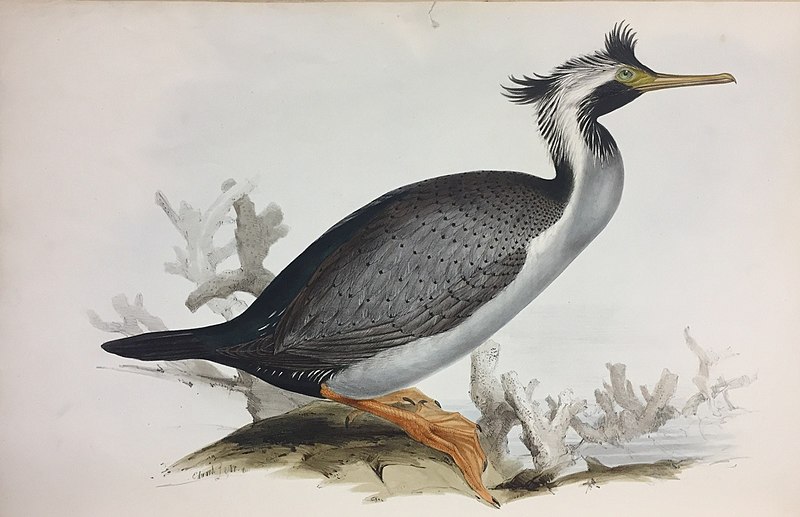
The Spotted Shag (Phalacrocorax punctatus) is an endemic bird of New Zealand. It is a species of cormorant, and for some time was placed in the separate genus Stictocarbo along with its similar relative, the Pitt shag due to its distinctive look.
Genetic studies have shown that it belongs to Phalacrocorax but retains many unique features such as black feathers on most of its body and white spots covering its neck and upper chest area.
Its wings are long compared to other members of this family making them well-suited for flying over large distances at sea or inland lakes.
They feed mainly on small fish which they hunt from both shorelines and open water areas alike.
The spotted shag can be found living around coasts throughout New Zealand’s main islands where their beauty makes them a joyous sight.Scientific classification:
| Kingdom | Animalia |
| Phylum | Chordata |
| Class | Aves |
| Order | Suliformes |
| Family | Phalacrocoracidae |
| Genus | Phalacrocorax |
| Species | P. punctatus |
Also Featured In: Cormorant Species,
25. White-Fronted Tern
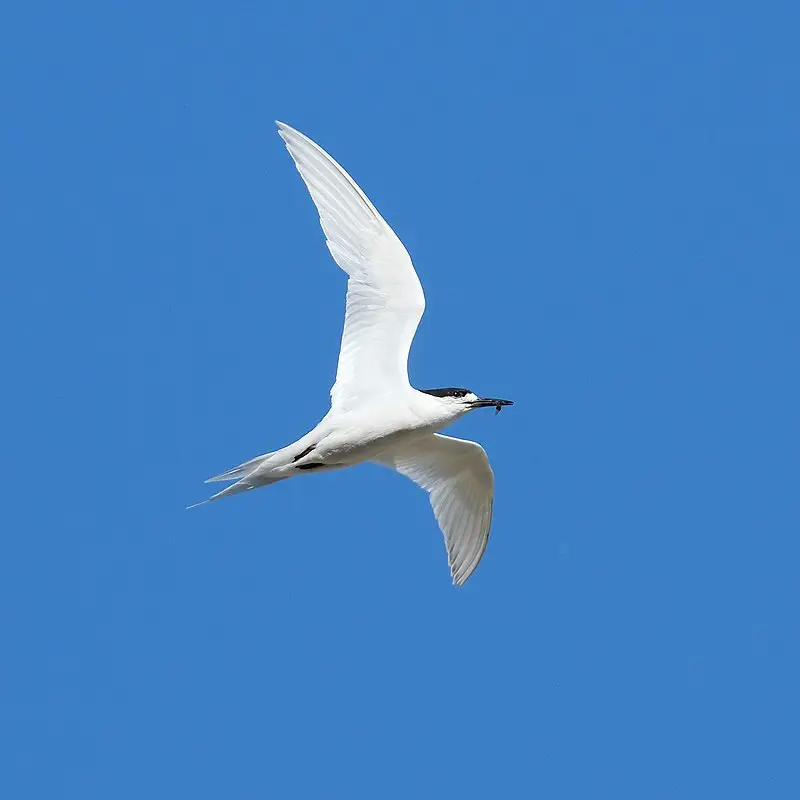
The White-fronted Tern is a medium-sized tern with an all white body and forked tail. Its wings have grey hues on the upper side and underwing.
During breeding season, this species can be distinguished by its striking black cap that covers its head, forehead and nape giving it a unique look.
It was first described by Johann Friedrich Gmelin in 1789 and goes by many names such as ‘tara’, ‘sea swallow’ or ‘swallowtail’.
These birds are commonly seen near coastlines where they hunt small prey like fish, crustaceans and insects over shallow waters.
Their diet also includes rodents which they capture during their migratory flights to more temperate regions during winter months.Scientific classification:
| Kingdom | Animalia |
| Phylum | Chordata |
| Class | Aves |
| Order | Charadriiformes |
| Family | Laridae |
| Genus | Sterna |
| Species | S. striata |
Also Featured In: Terns Species, Birds that Live in Kangaroo Island
26. Little Penguin
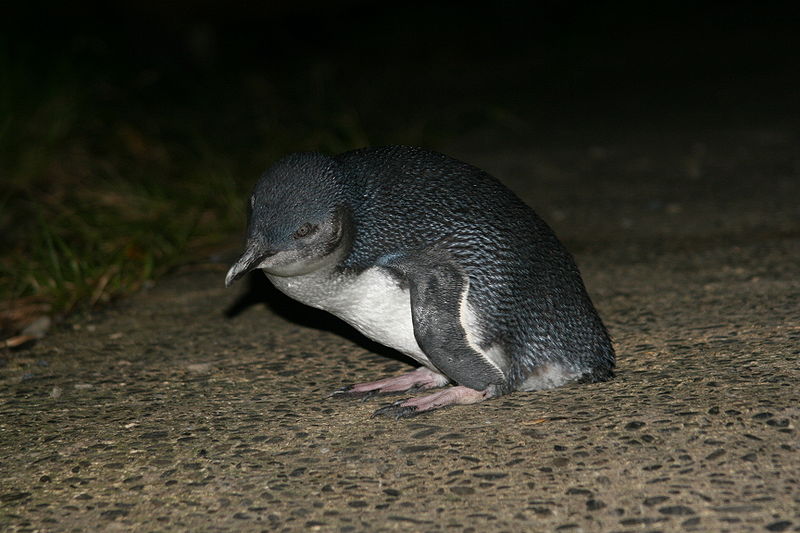
The Little Penguin, also known as the Blue Penguin or Kororā in Māori, is a type of penguin found in New Zealand. With its distinctive slate-blue plumage, it is a beloved symbol of the island nation’s wildlife.
The Little Penguin is a small bird that stands no taller than 40cm and weighs a mere 1kg, making it the smallest species of penguin in the world.
It can be found in many coastal and offshore areas around New Zealand, and is also known to frequent parts of Australia.
In fact, there is such a strong connection between New Zealand and this dapper little bird that it is often used as the mascot for local sports teams and other cultural events.
Despite its diminutive size, the Little Penguin is a tough survivor that has adapted well to the challenges of life in the wild.Scientific classification:
| Kingdom | Animalia |
| Phylum | Chordata |
| Class | Aves |
| Order | Sphenisciformes |
| Family | Spheniscidae |
| Genus | Eudyptula |
| Species | E. minor |
Also Featured In: Birds that Live around Victoria, Common Melbourne Birds
27. New Zealand Dotterel
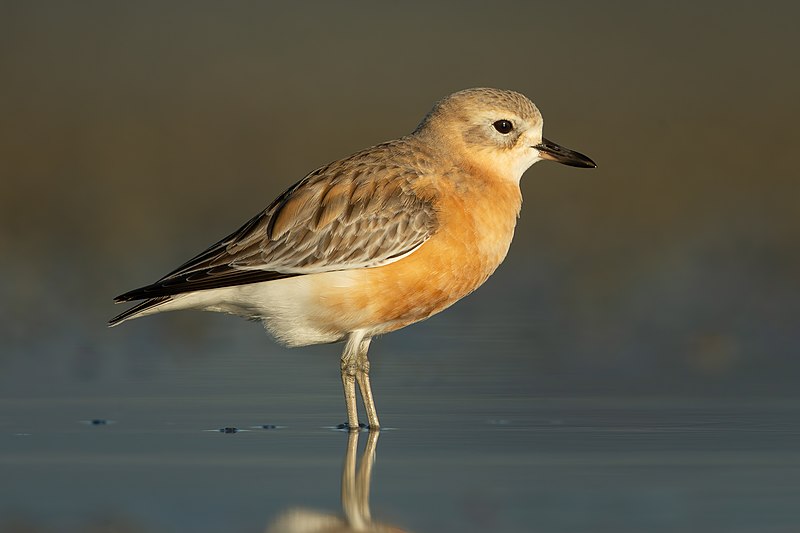
The New Zealand dotterel is a charming little shorebird found only in specific parts of New Zealand. It is also called the red-breasted dotterel or New Zealand plover.
This bird species has multiple Māori names like tūturiwhatu, pukunui, and kūkuruatu.
The southern subspecies of this bird is considered as critically endangered as only around 75 individuals are left in existence, and it was on the verge of extinction.
The New Zealand dotterel is a small shorebird that has a distinctive red-orange chest, a brown back, and a small black bill.
It nestles on the sand and lays two to three eggs that are very hard to spot due to their perfectly camouflaged color.
These birds face numerous threats like habitat destruction, human interference, and predation by introduced mammalian predators, making their conservation crucial for their survival.Scientific classification:
| Kingdom | Animalia |
| Phylum | Chordata |
| Class | Aves |
| Order | Charadriiformes |
| Family | Charadriidae |
| Genus | Charadrius |
| Species | C. obscurus |
28. Yellow-Crowned Parakeet
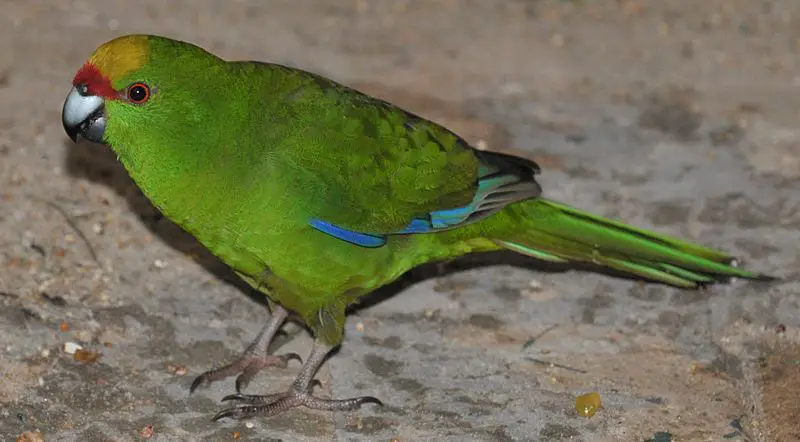
The Yellow-crowned parakeet is a unique bird species that can only be found in New Zealand. It has a distinct yellow crown on its head that sets it apart from other parakeet species.
Unfortunately, the population of Yellow-crowned parakeets has declined over the years due to threats from introduced predators like stoats.
This decline is alarming because this species is part of New Zealand’s unique biodiversity.
The birds can be seen in different parts of the country, including the North Island, South Island, Stewart Island/Rakiura, and the Auckland Islands.
It’s important to take measures to protect these birds’ population from further decline and maintain a healthy ecosystem.Scientific classification:
| Kingdom | Animalia |
| Phylum | Chordata |
| Class | Aves |
| Order | Psittaciformes |
| Family | Psittaculidae |
| Genus | Cyanoramphus |
| Species | C. auriceps |
29. Bushwren
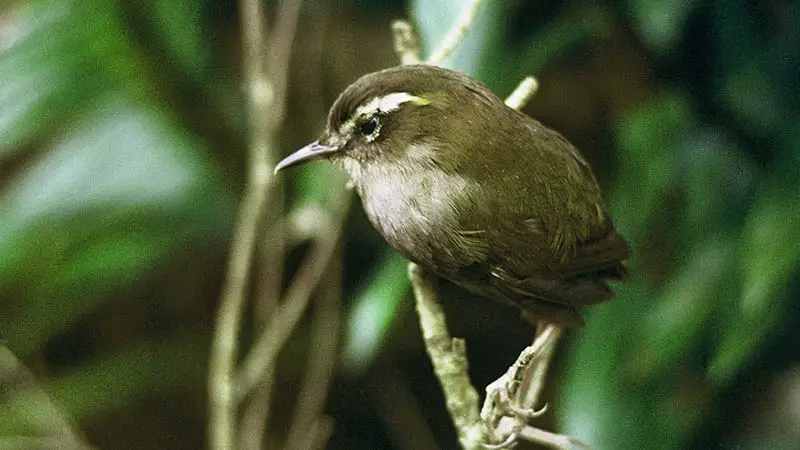
The bushwren, also called mātuhituhi in Māori, was a tiny bird that lived in New Zealand. This bird was almost unable to fly and was unique to the country.
There were three subspecies of the bushwren located in the different islands of New Zealand. Sadly, this species vanished gradually when invasive mammalian predators were introduced to their ecosystem.
They disappeared one by one, and the last sighting of a bushwren was many years ago. The extinction of the bushwren is a reminder of how important it is to protect and preserve our unique wildlife species.
The loss of just one species can disrupt the natural balance of an ecosystem, resulting in negative consequences for all living organisms.Scientific classification:
| Kingdom | Animalia |
| Phylum | Chordata |
| Class | Aves |
| Order | Passeriformes |
| Family | Acanthisittidae |
| Genus | Xenicus |
| Species | †X. longipes |
30. Hutton’s Shearwater
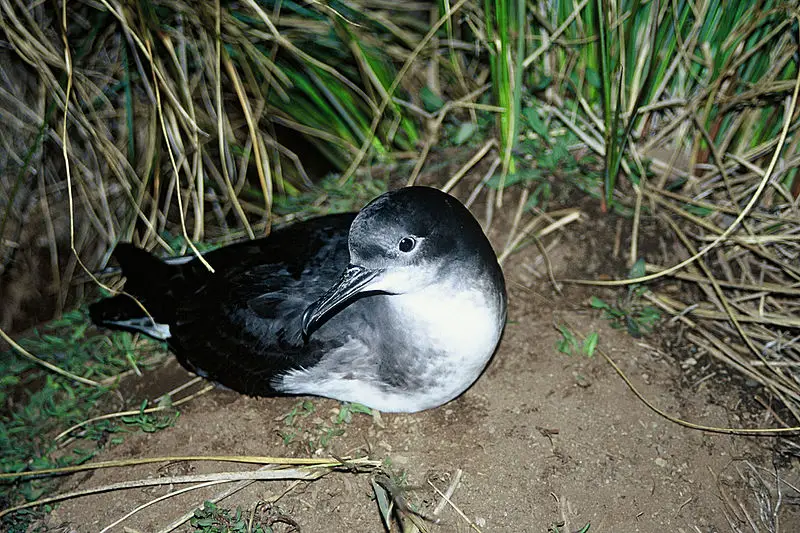
Hutton’s Shearwater is a medium-sized oceanic bird that belongs to the Procellariidae family. The seabird is found in Australian and New Zealand waters, but it only breeds in mainland New Zealand.
Unfortunately, the bird is currently listed as Endangered due to habitat loss and other threats. There are only two remaining breeding colonies situated in the Seaward Kaikōura Range, which is alarming.
Sadly, six other colonies have already been wiped out. The bird stands out for its distinctive long wings, narrow body, and pointed tail, while its grayish-brown upperparts and white underparts. The Shearwater feeds mainly on fish and squid by diving into the water.
The bird’s survival is critical, and measures must be put in place to prevent further decline in its population.Scientific classification:
| Kingdom | Animalia |
| Phylum | Chordata |
| Class | Aves |
| Order | Procellariiformes |
| Family | Procellariidae |
| Genus | Puffinus |
| Species | P. huttoni |
31. Common Diving Petrel
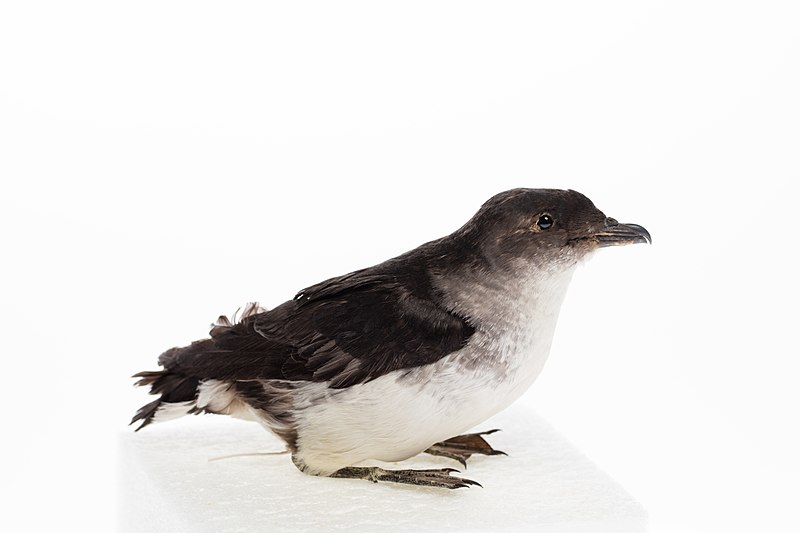
The common diving petrel is a small bird that lives in the southern oceans. It is often mistaken for an auk due to its similar appearance.
These birds are native to several islands including those in the South Atlantic and Southern Indian Oceans, as well as islands off the coasts of Australia and New Zealand.
They are excellent divers, as their name suggests, and are able to dive deep into the water to catch their prey.
Despite their small size, these birds are hardy and are able to withstand the harsh conditions of their habitat. Their populations are stable, thanks to measures taken to protect their breeding grounds.
Overall, the common diving petrel is a fascinating bird that can be found in some of the most remote and rugged parts of the world.Scientific classification:
| Kingdom | Animalia |
| Phylum | Chordata |
| Class | Aves |
| Order | Procellariiformes |
| Family | Procellariidae |
| Genus | Pelecanoides |
| Species | P. urinatrix |
Also Featured In: Passage Islands Birds You Should Know, Birds That Live In Tristan da Cunha
32. Rifleman
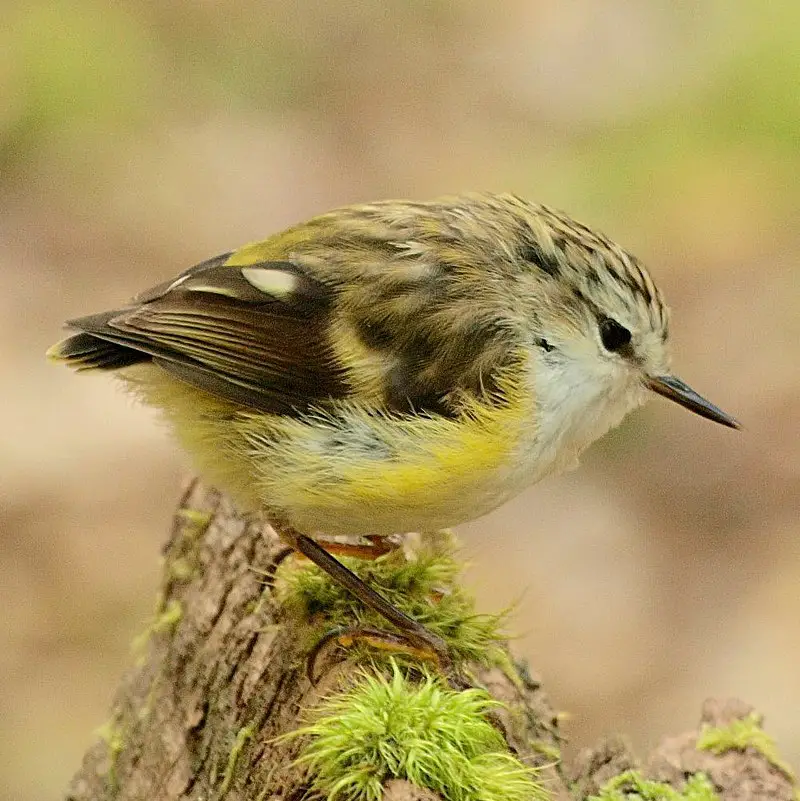
The Rifleman bird is a small passerine endemic to New Zealand. Belonging to the Acanthisittidae family, it is one of only two surviving species of New Zealand wrens.
Despite its name, it is not related to true wrens nor fairy-wrens of Australia. The bird shares a resemblance to wrens in form and is primarily insectivorous.
Known as titipounamu in MÄori, this tiny bird measures around 8–9 cm in length, which is roughly the size of a human thumb.
Due to its small size, it is known for its agility as it can climb trees and hop along branches like a nuthatch. The male and female of the species look identical, with greenish-brown plumage and a white underbelly.
With a lifespan of around 6-8 years, this discreet little bird is an important part of New Zealand’s unique avian biodiversity.Scientific classification:
| Kingdom | Animalia |
| Phylum | Chordata |
| Class | Aves |
| Order | Passeriformes |
| Family | Acanthisittidae |
| Genus | Acanthisitta Lafresnaye, 1842 |
| Species | A. chloris |
33. Little Shearwater
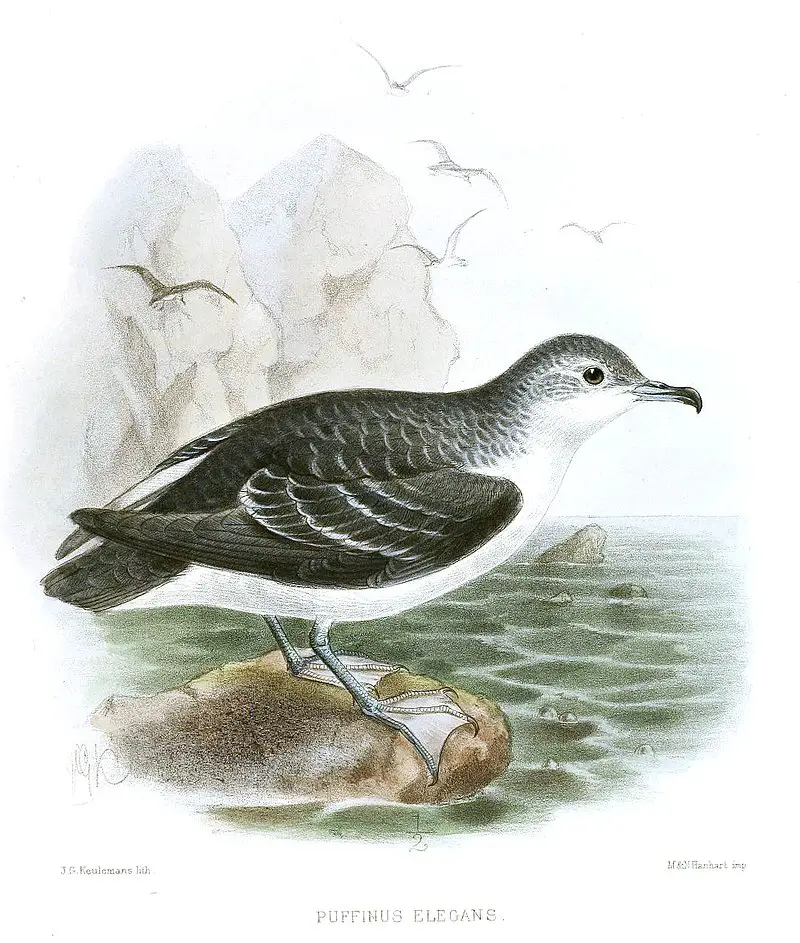
The little shearwater bird belongs to the petrel family Procellariidae. It is a burrow-nesting seabird and has a unique shearing flight pattern, where it dips from side to side on stiff wings with few beats.
Despite its name, it is not related to puffins or any other auk species. The little shearwater is small in size and has a distinctive appearance with its grayish-brown feathers and white underparts.
These birds are found in the southern hemisphere and are known for their long migratory journeys.
They are also known to forage in deep waters and feed on a variety of small fish and squid.
The conservation status of the little shearwater bird is currently listed as least concern, but its populations are threatened due to the potential impacts of climate change and human activities.Scientific classification:
| Kingdom | Animalia |
| Phylum | Chordata |
| Class | Aves |
| Order | Procellariiformes |
| Family | Procellariidae |
| Genus | Puffinus |
| Species | P. assimilis |
34. Snares Snipe
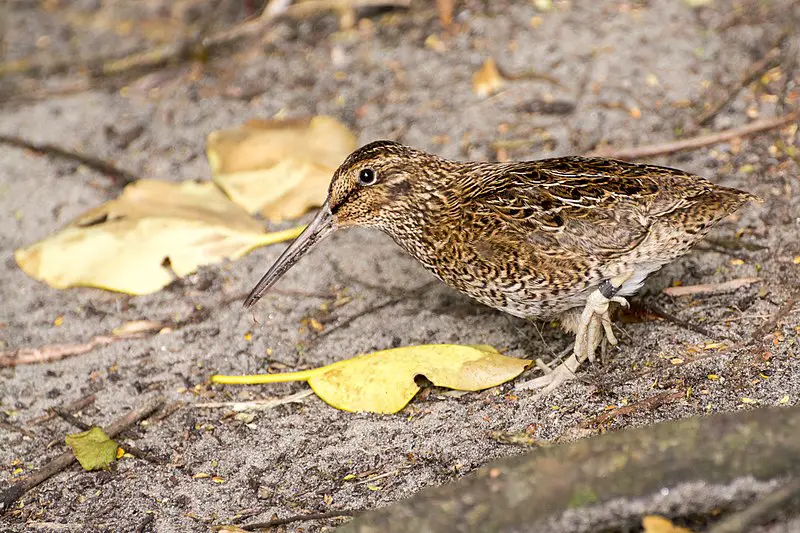
The Snares snipe, also called the Snares Island snipe or tutukiwi in MÄori, is a bird species in the sandpiper family, Scolopacidae.
Belonging to the genus Coenocorypha, the Snares Island snipe was once believed to be a subspecies of the Subantarctic snipe.
This bird is part of a group of birds with debated relationships. The Snares snipe can only be found in the Snares Islands, south of New Zealand.
It has a distinctive, short and straight bill and its plumage is brown with white stripes. These birds can be found in a range of habitats, from forested areas to rocky beaches.
Due to its limited range, the Snares snipe is considered a vulnerable species. Efforts have been made to conserve and protect their population.Scientific classification:
| Kingdom | Animalia |
| Phylum | Chordata |
| Class | Aves |
| Order | Charadriiformes |
| Family | Scolopacidae |
| Genus | Coenocorypha |
| Species | C. huegeli |